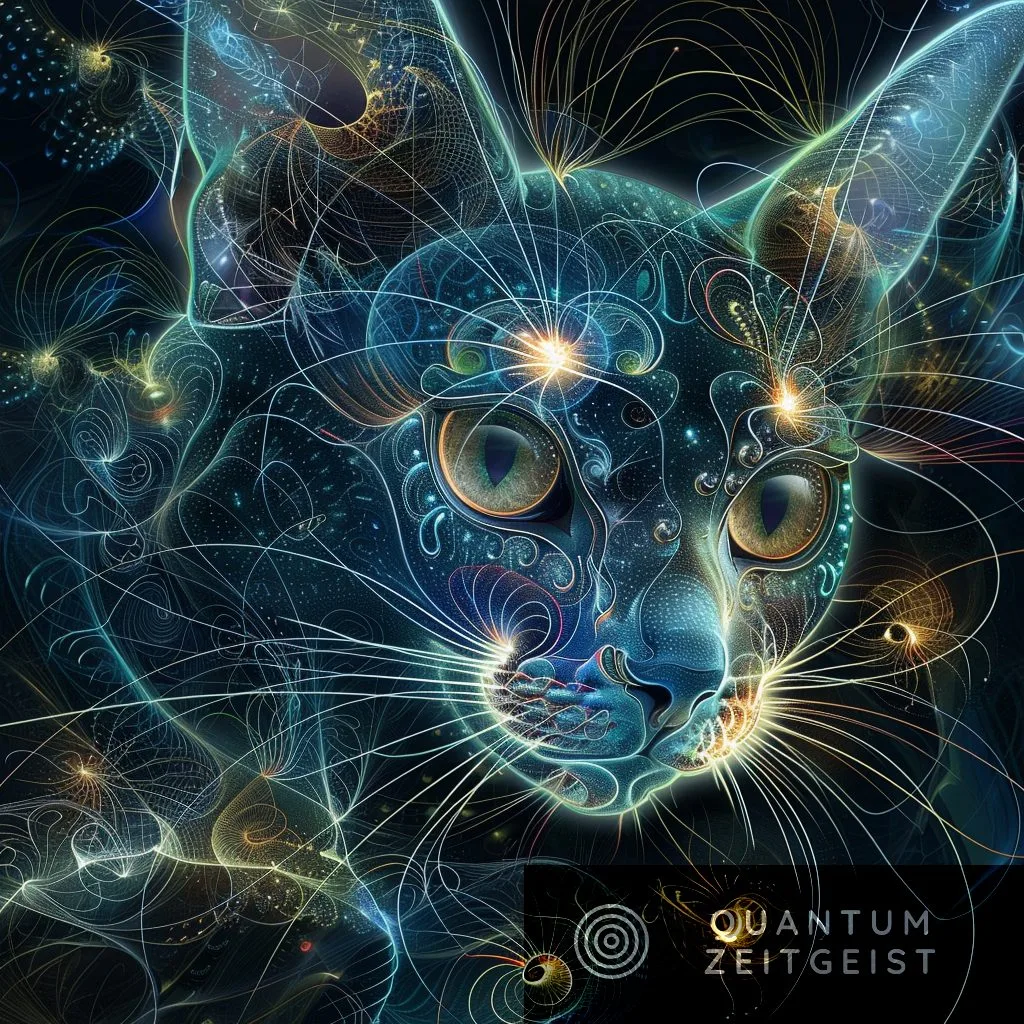
A study by researchers from the Institute for Solid State Physics and Optics, HUNREN Wigner Research Centre for Physics, Institute of Physics, University of Pécs, and Lebedev Physical Institute, published in the journal Entropy, explores the probability representation of even and odd cat states of two and three qubits in quantum mechanics. The team derived exact formulas for entangled probability distributions, which could be instrumental in further studies and applications in quantum mechanics. The research also provides a deeper understanding of these states and their behavior, with potential implications for quantum computing, quantum cryptography, and quantum teleportation.
What are Even and Odd Cat States in Quantum Mechanics?
Quantum mechanics, a fundamental theory in physics, describes nature at the smallest scales of energy levels of atoms and subatomic particles. In a recent study by Matyas Mechler, Margarita A Manko, Vladimir I Manko, and Peter Adam, the researchers delve into the probability representation of even and odd cat states of two and three qubits. These states are even and odd superpositions of spin-1/2 eigenstates corresponding to two opposite directions along the z-axis.
The researchers are affiliated with the Institute for Solid State Physics and Optics, HUNREN Wigner Research Centre for Physics, Institute of Physics, University of Pécs, and Lebedev Physical Institute. The study was published in the journal Entropy in May 2024 and is an open access article distributed under the terms and conditions of the Creative Commons Attribution (CC BY) license.
The probability representation of even and odd cat states of an oscillating spin-1/2 particle is also discussed in the study. The researchers obtained the exact formulas for entangled probability distributions describing density matrices of all these states.
What is the Probability Representation of Quantum States?
The probability representation of quantum states was suggested for systems with both continuous and discrete variables. In this representation, the system states were expressed through regular nonnegative probability distributions defined in the phase space. These probability distributions can be derived from the density operator and they contain all information on the quantum system.
The probability representation can be used to explain all quantum effects effectively by using the standard properties of the conventional probability theory. This representation is related to other quasi-probability representations of quantum states such as the Glauber-Sudarshan P function, the Husimi Q-function, and the Wigner function by integral transform.
What are the Key Concepts in the Study?
The study revolves around several key concepts in quantum mechanics. These include probability distribution, dequantizer and quantizer operators, symplectic tomography, even and odd cat states, and entanglement.
Probability distribution in quantum mechanics is a statistical function that describes all the possible values and likelihoods that a random phenomenon might occur within an experiment’s range. Dequantizer and quantizer operators are mathematical tools used in the study of quantum systems. Symplectic tomography is a method used to reconstruct the quantum state of a system from a set of measurements.
Even and odd cat states refer to specific states in quantum mechanics that are superpositions of spin-1/2 eigenstates. Entanglement is a unique quantum mechanical phenomenon in which the quantum states of two or more objects have to be described with reference to each other, even though the individual objects may be spatially separated.
How Does the Study Contribute to the Field of Quantum Mechanics?
The study by Mechler, Manko, Manko, and Adam contributes significantly to the field of quantum mechanics. By deriving the probability representation of even and odd cat states of two and three qubits, the researchers provide a deeper understanding of these states and their behavior.
The exact formulas for entangled probability distributions describing density matrices of all these states are obtained, which could be instrumental in further studies and applications in quantum mechanics. The researchers’ work also sheds light on the probability representation of an oscillating spin-1/2 particle, adding to the body of knowledge in the field.
What are the Implications of the Study?
The implications of the study are far-reaching. The probability representation of quantum states can be used to explain all quantum effects effectively, making it a valuable tool in the study and understanding of quantum mechanics.
The exact formulas for entangled probability distributions obtained in the study could be used in various applications, including quantum computing, quantum cryptography, and quantum teleportation. The study also provides a deeper understanding of even and odd cat states, which could have implications in the study of quantum superposition and entanglement.
What are the Future Directions of the Research?
While the study provides significant insights into the probability representation of even and odd cat states of two and three qubits, there are several potential directions for future research. Further studies could explore other quantum states and their probability representations.
The exact formulas for entangled probability distributions obtained in the study could be applied in various quantum mechanical systems to understand their behavior better. Future research could also delve deeper into the properties and applications of even and odd cat states, contributing to the broader understanding of quantum mechanics.
Publication details: “Even and Odd Cat States of Two and Three Qubits in the Probability Representation of Quantum Mechanics”
Publication Date: 2024-05-31
Authors: Mátyás Mechler, Margarita A. Man’ko, V. I. Man’ko, P. Ádám, et al.
Source: Entropy
DOI: https://doi.org/10.3390/e26060485


